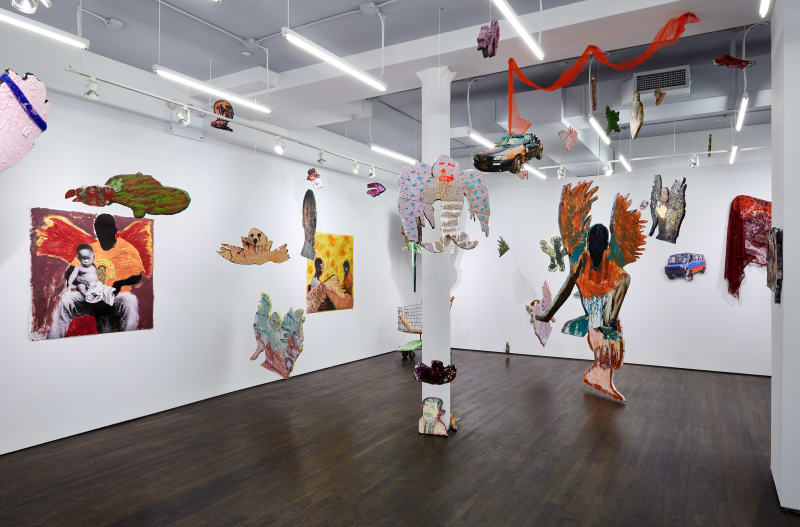Lloyd Foster: Safe Journey: White Columns
White Columns is pleased to present Safe Journey, the first solo exhibition in New York by the Ghanaian-American artist Lloyd Foster.
For White Columns Foster has created a dense, immersive and labyrinth-like installation that juxtaposes suspended mixed-media sculptural works, framed works-on-paper, large-format overpainted photographic prints, and video works presented on pre-digital television monitors. Materially promiscuous, Foster’s visceral works freely combine paint, photographs, drawings, insulating foam, sponges, nets, pumice, hibiscus, and much more besides.
Foster has described his work as an exploration of what he terms as “time away” – journeys both physical and metaphorical. Working from his own photographic sources and video footage shot during repeated visits to Ghana, Sierra Leone, and Tanzania made between 2015 and 2021, Foster has created an emotionally and psychologically complex body of work that is ultimately centered around his relationship with photography, and photography’s relationship with time, experience, memory and loss. In a recent interview Foster expanded upon these ideas:
“My art is heavily inspired by my childhood. I sometimes find myself reliving life moments through the people that I’m photographing and their experiences. For instance, looking at the photograph that I took of a mother holding her children’s hands as they walk on the beach, it reminded me of the times my mother held my hand as we took laps around the lake when I was younger. There are certain moments that ‘click’ to me, and I appreciate seeing them, even if I’m not photographing them.”
In his ongoing series of text drawings Foster establishes an inventory – a form of cross-cultural mapping – of the goods, produce and foodstuffs that one might encounter in an African street market. For a 2021 project Foster installed his own works among the produce at Stella Adebola’s African Caribbean Food Market in East Flatbush, Brooklyn. Exploring questions of identity – both personal and cultural – Foster’s kinetic practice disrupts, and ‘explodes,’ the conventional narratives and intentions we might typically associate with the documentarian and documentary photography itself. Forster creates unruly image-objects that are constantly in flux and open to interpretation. In Foster’s hands images – like memories – become more liminal, fleeting even.



